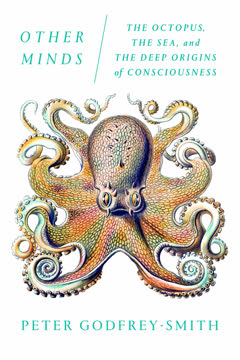つの重要なポイント
1. 1970年代以降、進歩は停滞し、社会に深刻な影響を及ぼしている
「私たちは空飛ぶ車を望んでいたが、代わりに140文字を手に入れた。」
停滞は現実である。 指数関数的な成長や加速する変化のレトリックにもかかわらず、1970年代以降、技術進歩は著しく鈍化している。これは以下の点で明らかである:
- 1971年以降の中位賃金の停滞
- 経済バブルと崩壊の頻度と規模の増加
- 宇宙時代の予測の失敗(例:2000年までに15時間労働週)
- 楽観的なSF(スタートレック)からディストピア的なSF(ターミネーター)への変遷
影響は深刻である。 進歩の欠如は以下の結果をもたらした:
- 機関への信頼の低下
- 不平等と社会的不安の増加
- 主要なグローバルチャレンジを解決する能力の低下
イノベーションは地理的に集中している。 歴史を通じて、進歩は特定の創造的クラスター(例:ルネサンス期のイタリア、ビクトリア朝の英国、シリコンバレー)によって推進されてきた。これらのクラスターは、競争と新しい参加者によって更新されない限り、最終的には衰退する。
2. 大学は高価でしばしば無用な資格を売っている
「高等教育はアメリカの国教となり、天国と地獄、救済と破滅がある。勝者か罪人か。イェールか刑務所か。」
資格重視の学習。 大学は高価な卒業証書を売ることに焦点を当て、本物の教育を提供することを怠っている:
- 1970年代以降、大学の費用は400%増加
- 大学が批判的思考や他のスキルを向上させるという証拠はほとんどない
- 「羊皮紙効果」:最終学年を修了することで大きな賃金プレミアムが得られるが、学習は最小限
浪費と借金。 現行のシステムは:
- 学生に圧倒的な借金を負わせる
- 労働市場への参入とイノベーションを遅らせる
- 創造性よりも従順さを奨励する
代替案が必要。 著者は新しいモデルを提唱している:
- 若者が実践を通じて学ぶことを可能にする
- 知識の最前線に迅速に到達する道を提供する
- 資格ではなく能力で人を評価する
3. ティールフェローシップは若い中退者を支援することで伝統的な教育に挑戦している
「世界を変え、それを卒業論文と呼べ。」
急進的な実験。 ティールフェローシップは、20歳未満の人々に大学外でアイデアを追求するための10万ドルの助成金を提供している:
- 2011年にピーター・ティールによって開始
- 若い才能を制度的な制約から解放することでイノベーションを加速させることを目指す
- イーサリアム(現在は数十億ドルの価値がある)などの成功したベンチャーを支援
選考プロセス。 フェローシップは以下の点を重視する:
- 技術的な卓越性と「エッジコントロール」や「ハイパーフルエンシー」などの特性の組み合わせ
- 野心的だが実現可能な長期ビジョンを明確に表現する能力
- 伝統的な知恵に挑戦する意欲
論争と結果。 設立当初は批判されたが:
- 多くのフェローが成功した企業を立ち上げ、重要な発見をしている
- 伝統的な資格を超えた影響を与える代替の道を示している
4. ベンチャーキャピタルは確立された企業によって支配されているが、アウトサイダーも成功できる
「確信があるなら、VARが4になるまで話に来るな。」
VCの風景。 ベンチャーキャピタル業界は確立された企業に大きく偏っている:
- ほとんどのファンドは失敗する(80%は資本を返さない)
- トップ企業は強力なネットワーク効果とブランドの利点を持つ
- 新規参入者が参入するのは困難
1517ファンドのアプローチ。 著者のファンドはアウトサイダーとして成功した:
- 中退者や大学の学位を持たない人々に特化
- 独自の才能発掘方法を開発
- 創業者のための強力なコミュニティとサポートネットワークを構築
課題は残る。 成功しても、ファンドは以下の問題に直面した:
- 確立されたプレイヤーからの抵抗(「クラムダウン」)
- 伝統的な投資家からの懐疑
- 常に自分たちの仮説を証明し続ける必要
5. シリコンバレーの衰退はアメリカの広範な制度的失敗を反映している
「サンフランシスコはアナーコ・ティラニーを確立した。すべてが許されるが、何も許可されない。」
失われた楽園。 かつてのイノベーションの中心地であったサンフランシスコは以下の理由で衰退している:
- 機能不全のガバナンス(例:住宅制限、許可の遅延)
- 創造的なクラスを追い出すコストの上昇
- ホームレスと公共の安全問題の増加
- 他の地域への才能と企業の流出
広範な傾向。 この衰退は広範な制度的失敗を反映している:
- 増加する官僚主義と規制がイノベーションを抑制
- 特殊利益団体と既得権益者による捕獲
- フロンティア精神とリスクを取る意欲の喪失
再生の必要性。 著者は以下を提唱している:
- 政策実験を可能にする新しい「特別経済ゾーン」
- 進歩を促進するための制度的競争
- ダイナミズムとリスクテイクの精神を再発見すること
6. エネルギー、健康、教育などの分野で技術的なブレークスルーが必要
「老化は世界で最も多い死因と苦しみの原因である。」
重要なフロンティア。 本書はイノベーションのための重要な分野を特定している:
エネルギー:
- 核融合と次世代原子力
- 改良された太陽光、風力、地熱
- グリッド規模のエネルギー貯蔵
健康:
- 老化の治療(例:細胞の再プログラミング)
- がん免疫療法
- 迅速なワクチン開発
教育:
- 大規模な個別学習
- 伝統的な教室の代替
- 動機付けと保持技術の向上
その他:
- 自動運転車
- 量子コンピューティング
- 水の豊富さ(淡水化、大気水生成)
課題。 進歩には以下が必要:
- 基礎研究への資金増加
- より迅速な反復を可能にする規制改革
- 長期的で高リスクなプロジェクトを評価する文化的シフト
7. 人間の繁栄には、出来事への反応を制御するだけでは不十分
「雷雲の中に生き、マストのない船のように、家に漂うよりもわずかに良いが、それでも巨大で無限の海に向かって進む。」
ストイシズムを超えて。 人気があるが、ストイック哲学とその現代的解釈は不十分である:
- 反応を制御することに焦点を当てると、現実からの分離につながる可能性がある
- 外部の財や関係の重要性を無視する
- 真の問題に直面したときの無関心の言い訳になる可能性がある
繁栄の鍵:
- 所属感とコミュニティ
- 意味のある目的と貢献
- ポジティブな感情とネガティブな感情の両方を受け入れる
- 外部の状況を改善するための行動を取る
行動への呼びかけ。 著者は読者に以下を促している:
- 精神的な要塞に退却するのではなく、世界と関わる
- 実際の問題を解決し、人類の進歩を促進するために働く
- 強い関係とコミュニティを築く
- 反応を制御するだけでなく、闘いの中に意味を見出す
最終更新日:
FAQ
What's Paper Belt on Fire about?
- Focus on Innovation Stagnation: The book explores the decline in technological and scientific progress in the U.S. since the 1970s, attributing it to a loss of the American frontier spirit.
- Critique of Higher Education: It critiques the current education system for stifling creativity and innovation, coining the term "Paper Belt" to describe these outdated institutions.
- Support for Young Innovators: The narrative highlights the Thiel Fellowship and the 1517 Fund, which support young entrepreneurs who challenge traditional educational paths.
Why should I read Paper Belt on Fire?
- Insightful Analysis: The book provides a thorough analysis of the factors contributing to innovation stagnation and offers a fresh perspective on societal challenges.
- Inspiration for Change: It serves as a call to action for young people to pursue significant problems and innovate outside traditional frameworks.
- Engaging Narrative: The author weaves personal anecdotes with broader societal critiques, making the book both informative and engaging.
What are the key takeaways of Paper Belt on Fire?
- Stagnation in Progress: The book argues that the rate of scientific and technological progress has flatlined since around 1971.
- Value of Non-Traditional Paths: It emphasizes the importance of supporting young innovators who may not follow the conventional college route.
- Critique of Credentialism: The book critiques the obsession with degrees and credentials, advocating for alternative educational paths.
What are the best quotes from Paper Belt on Fire and what do they mean?
- “We don’t believe in indulgences.”: Critiques universities for selling diplomas as the only path to success, likening it to the sale of indulgences by the Catholic Church.
- “The strong do what they can, the weak suffer what they must.”: Illustrates the harsh realities of power dynamics in venture capital.
- “Nature loves to hide her secrets.”: Advocates for seeking out hidden talent and potential in unexpected places.
How does [Author] define the "Paper Belt" in Paper Belt on Fire?
- Critique of Established Institutions: The "Paper Belt" refers to the network of outdated institutions resistant to change and innovation.
- Symbol of Stagnation: It symbolizes the bureaucratic mindset that stifles creativity and progress.
- Call for Reform: The author argues for the need to dismantle or reform these institutions to foster creativity and technological advancement.
What is the Thiel Fellowship and its significance in Paper Belt on Fire?
- Support for Young Innovators: Awards $100,000 grants to young people under 20 to pursue innovative projects instead of attending college.
- Counteracting Credentialism: Challenges the notion that a college degree is necessary for success, empowering young people to explore their ideas.
- Success Stories: Highlights successful fellows like Vitalik Buterin, showcasing the potential of investing in unconventional talent.
What is the Nakamoto Consensus as described in Paper Belt on Fire?
- Decentralized Decision-Making: Refers to a method of achieving agreement in a decentralized network, allowing for innovation without a central authority.
- Contrast to Traditional Models: Opposes the centralized power structures of traditional institutions, promoting a more democratic approach.
- Implications for Innovation: Suggests that new technologies, like blockchain, can create systems more resilient and adaptable than existing institutions.
How does Paper Belt on Fire address the failures of the education system?
- Stagnant Learning Outcomes: Presents evidence that despite increased spending, student learning outcomes have not improved significantly.
- Focus on Time Over Knowledge: Critiques the emphasis on time spent in classrooms rather than actual knowledge acquisition.
- Need for Alternative Models: Advocates for educational models prioritizing hands-on experience and innovation over traditional academic paths.
How does the author view the relationship between innovation and institutions in Paper Belt on Fire?
- Mutual Dependence: Argues that innovation and institutions are interdependent; as institutions fail to adapt, innovation suffers.
- Need for Disruption: Believes existing institutions must be disrupted or reformed to create an environment conducive to innovation.
- Role of Venture Capital: Portrays venture capital as a means to support innovative ideas outside traditional institutional frameworks.
What role do young innovators play in the future according to Paper Belt on Fire?
- Catalysts for Change: Seen as essential to breaking the cycle of stagnation and driving progress in science and technology.
- Diverse Backgrounds: Emphasizes that talent can come from unexpected places, supporting diverse paths for groundbreaking discoveries.
- Empowerment through Funding: By providing funding and resources, the Thiel Fellowship and 1517 Fund aim to empower the next generation.
How does Paper Belt on Fire address the issue of climate change?
- Critique of Current Solutions: Critiques current approaches, arguing they focus on conservation rather than innovation.
- Potential for New Technologies: Discusses technologies like fusion energy and advanced irrigation techniques to mitigate climate change.
- Call for Action: Emphasizes the need for urgency in addressing climate change through a culture of innovation.
What are the challenges faced by the 1517 Fund as described in Paper Belt on Fire?
- Skepticism from Traditional VCs: Faces skepticism from established venture capitalists questioning the viability of investing in dropouts.
- Building a Track Record: Must establish a track record of success to attract further investment and credibility.
- Navigating Institutional Resistance: Must navigate resistance from traditional institutions threatened by its unconventional approach.
レビュー
本書『Paper Belt on Fire』は賛否両論の評価を受けており、平均評価は3.93/5である。読者はギブソンのティール・フェローシップと1517ファンドに関する内部視点を高く評価し、彼のイノベーションと教育改革に関する洞察を称賛している。多くの人々は、特に技術と学習の未来に関する部分を魅力的で考えさせられると感じている。しかし、一部の読者はギブソンの文体、主張の裏付けの欠如、そして例外的な事例に過度に依存している点を批判している。また、本書の構成や焦点についても議論があり、一部の読者はそれをまとまりがない、または自己中心的だと感じている。
Similar Books














